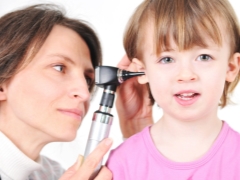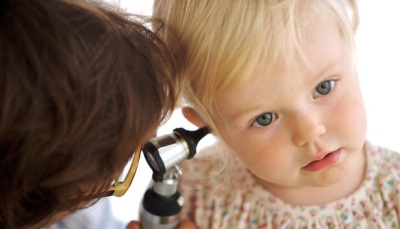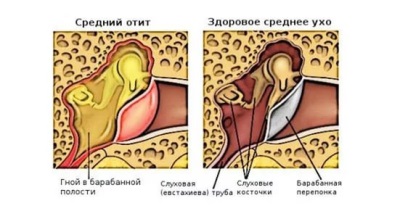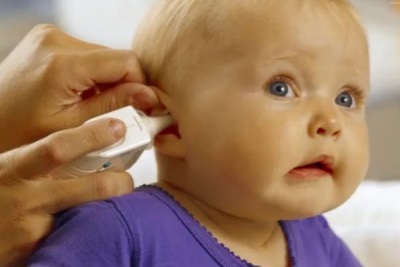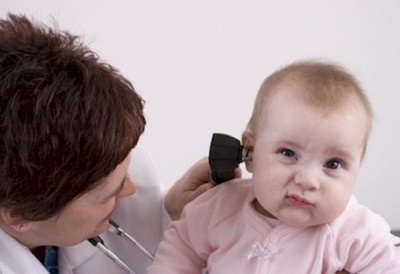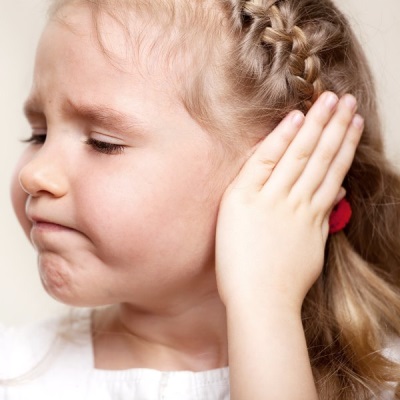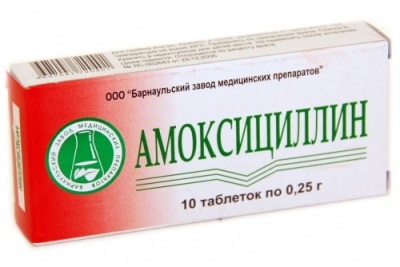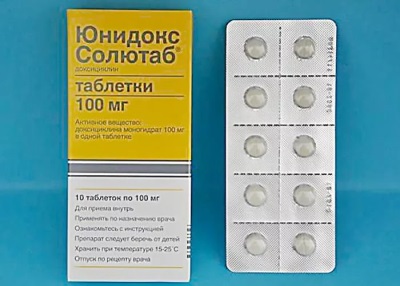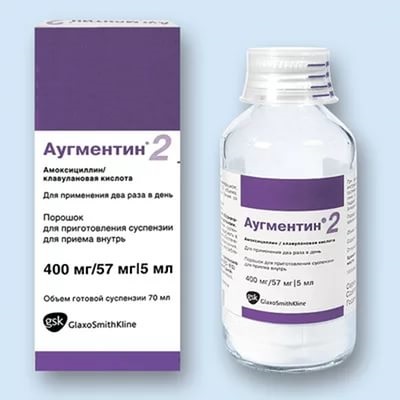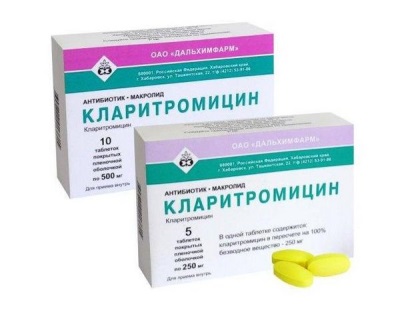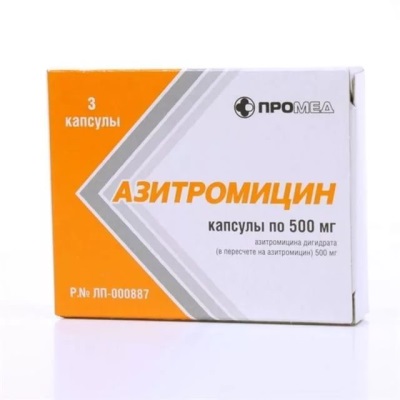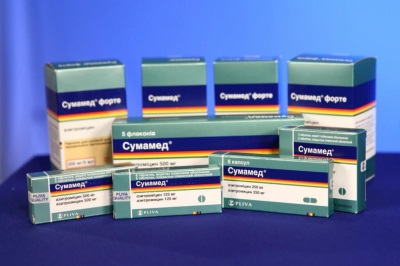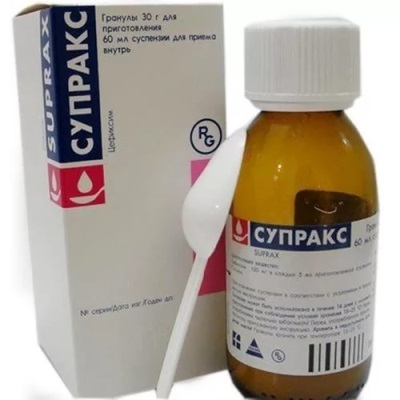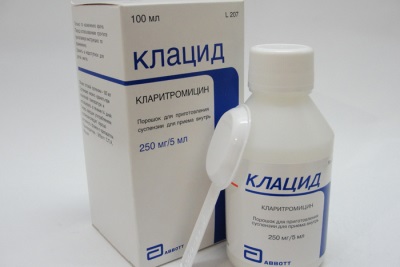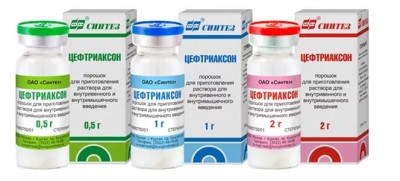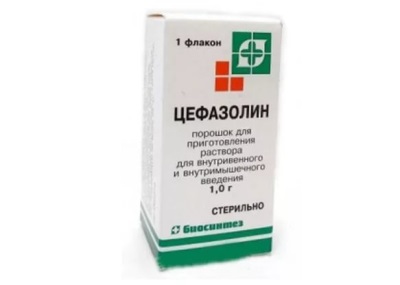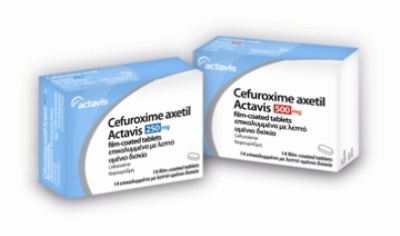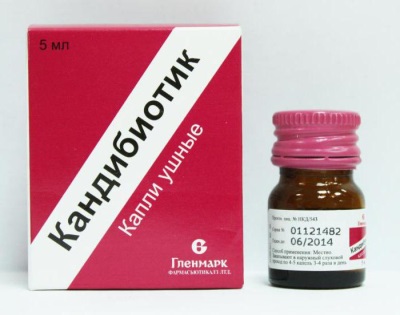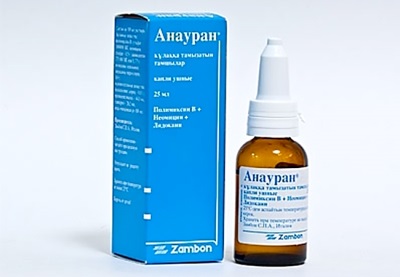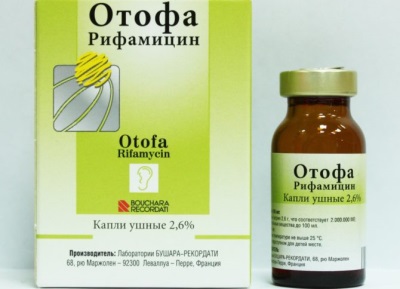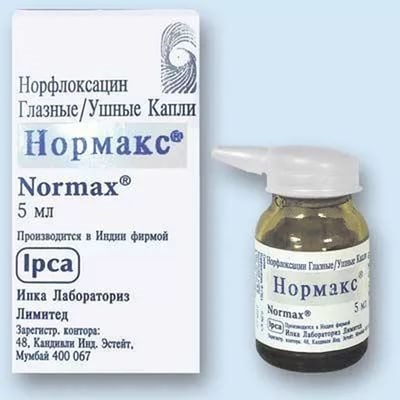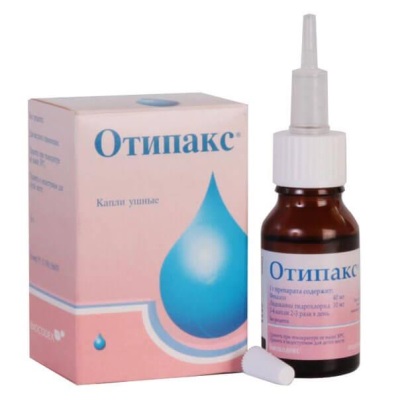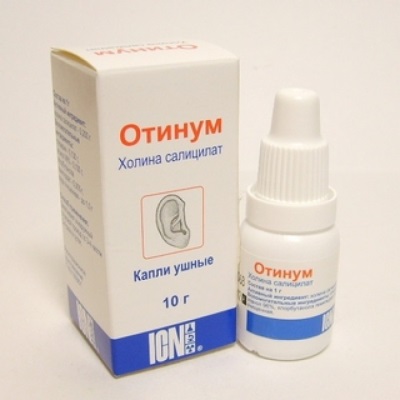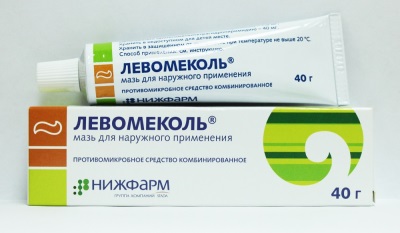Antibiotics for otitis in children
Inflammation of the ear is a very unpleasant and pleased dangerous disease that every child had had at least once in their life. Otitis according to medical statistics are in fourth place in frequency of occurrence. Before them - only viral infections (flu and ARVI), and ENT diseases - bronchitis and sore throat.
Pediatricians state that every fifth small Russian suffers otitis in epidemic seasons. Children of any age are in the risk group, but children under 3 years are more likely to be ill. This is dictated by the characteristics of the structure of the children's ear (the inconclusive formation of the ear canal) and the "looseness" of the mucous membranes in childhood.
Most parents are interested in, and whether antibiotics are needed in the treatment of otitis media, or you can do without them. There is no definite answer. It all depends on what kind of otitis happened to your baby.
Otitis are outer, middle and localized in the inner ear. And their stages range from mild to moderate to acute and catarrhal. Exactly, depending on the stage of the disease, the question of prescribing an antibiotic to the child will be decided.
Otitis symptoms are easy to recognize. The child complains of shooting or sharp pain in the ear, headache. The baby's temperature may rise, hearing is reduced, and with purulent otitis, a specific fluid with an admixture of pus is secreted from the ear.
The mobile and active peasant becomes sluggish, painful, drowsy and capricious, his appetite disappears.
Do I need antibiotics?
It should be noted that only 10-11% of children with otitis media need antibacterial therapy. This mainly applies to cases of purulent otitis. If you find symptoms of otitis, it is not necessary to resolve the issue of treatment yourself, take the baby to the doctor. If, upon examination, the doctor does not detect signs of the presence of a virus in the body (runny nose, high fever, dry cough, etc.), then he may suggest otitis media of bacterial etiology in a child. And then there will be a question about taking antibiotic drugs.
In the next video, Dr. Komarovsky will tell you when it is necessary to use antibiotics to treat otitis.
When are antimicrobials not needed?
- Children who overstepped the age of 2 years with mild and moderate otitis media. The first two days, the doctor will try to treat otitis media in alternative ways - he will recommend painkillers (Panadol, Nurofen, etc.), vasoconstrictor nasal drops, as well as tell you how to make a warming alcohol compress. After a couple of days, it will become obvious where to go next. If the crumbs' immunity cope with the infection, there will be relief of the symptoms of otitis. If not, it is worth thinking about antibiotics.
- Children whose otitis has become a complication of a viral infection (flu or ARVI). It's all pretty simple. Antibiotics are only effective against bacteria. Viruses are not subject to them. An antibiotic will not help, but it can harm a child.
- Children older than 2 years who do not have fever and moderate earache do not need an antibiotic either to avoid an immunosuppressive effect on the growing body. In other words, such a baby can easily cope with the infection itself with the help of its own defense system.
Indications for appointment
- In cases where otitis is diagnosed in a newborn and a child under 2 years old.
- If the body temperature of the crumbs rises above 39 degrees and lasts more than 2 days.
- When a visual inspection confirms the presence of pus in the ear.
- If the baby has visible signs of severe intoxication.
The most frequent "culprits" of otitis media in childhood are the well-known from the school course of biology staphylococcus and hemophilus bacillus. Antibiotics of the penicillin family, as shown by recent medical studies, are, alas, ineffective against pests that cause ear inflammation. However, they can cure mild forms of the disease. In addition, relatively "soft" and "delicate" penicillin preparations will be an excellent start in therapy. If there is no relief in a couple of days, the pediatrician or ENT doctor will change the antibiotic to another.
For the treatment of the acute form of the disease and catarrhal otitis, as a rule, cephalosporin-type antibiotics and macrolides are used. They are more powerful; most bacteria cannot oppose anything to them. However, the list of side effects and contraindications of such funds is much broader.
The form of the antibiotic also matters. Syrups, tablets and suspensions can be taken in the treatment of ear inflammation. But at a difficult stage of the disease, for example, with purulent otitis, doctors prefer to prescribe injections.
Antibiotic list
- «Amoxicillin». An antibiotic of the penicillin group, which is widely used in the treatment of acute otitis media. Newborns and babies up to 5 years old are advised to use an antibiotic in a convenient suspension form. From 7 years old - in pills, adolescents from 12 years old - in capsules.
- "Unidox Solutab". Antibiotic drug tetracycline, which helps in the treatment of all forms of otitis. In pharmacies, it is sold in the form of dissolving tablets. The medicine is not prescribed to children under 8 years old. In general, pediatricians "dislike" tetracyclines due to the abundance of side effects.
- Augmentin. This penicillin drug has proven itself as a treatment for otitis media. For the treatment of otitis use higher dosages of this antibiotic. For kids fit shape suspensions, which can be prepared from pellets purchased at the pharmacy. For children of senior school age - pills. "Augmentin" the doctor can prescribe and injections to a patient of any age, if he considers it necessary.
- «Clarithromycin». Antibiotic - semisynthetic macrolide. Doctors prescribe this drug for various forms of otitis. For children over 6-7 years old, the drug can be given in tablets, after 12 years - in capsules. There is no other form of release of Clarithromycin. The child’s antibiotic dosage is calculated by the doctor, taking into account the age and weight of the child, as well as the stage and features of the disease.
- «Azithromycin». Antibiotic macrolide, which is often prescribed for children with inflammation of the middle ear and exacerbations of chronic disease. It is available in capsules and tablets. Not recommended for children under 12 years of age.
- «Sumamed». This antibiotic of the macrolide-azalide group is also a fairly common remedy for treating the inflamed middle ear. The drug is prescribed if the child is already 6 months old. The antibiotic can be used in suspension, in tablet form or in capsules. Sometimes doctors recommend "Sumamed" injections.
- «Suprax». Cephalosporin antibacterial agent is prescribed in capsules or suspensions for the treatment of otitis, mainly acute or moderate form of the disease for children from birth. However, before half a year, the medicine should be given with extreme caution, it is better - in a hospital under the supervision of specialists.
- «Klacid». Quite a known antibiotic macrolide family. It is often recommended for the treatment of all forms of hearing inflammation. Existing pharmacy forms of the antibiotic give free rein to both doctors and parents. The drug can be given to the child in the form of a suspension, in tablets, as well as injected intramuscularly or intravenously. The dose is calculated by the doctor, he also decides whether the use of Klacid is appropriate for children under 1 year old.
- «Ceftriaxone». Antibiotic group cephalosporins of the third generation. The drug is relevant in complex forms of the disease, when immediate antibacterial therapy is required. In case of a purulent form of otitis, the medicine will be prescribed in the form of injections. The drug is given to children from birth with strict adherence to the dosage regimen.
- «Cefazolin». Cephalosporin first generation. It is available only in the form of powders for the preparation of injections, and therefore his doctor may prescribe a child if otitis is neglected or purulent, as well as in cases of severe course of other forms of the ailment. The drug is prescribed to children from 1 month of age.
- "CEFIPHIM". The fourth-generation cephalosporin antibiotic is prescribed in exceptional cases. If otitis is severe, other antibiotics have not helped. The only form of release is dry matter for the subsequent preparation of infusions (shots). This is a strong antibiotic with a large list of side effects. Newborns and infants, the drug is usually administered in the hospital under the clock supervision of doctors.
- Cefuroxime Axetil. The second-generation cephalosporin has proven itself in the treatment of ENT diseases, including otitis. It is available in two forms: dry matter for injection and tablets. The medicine can be applied to newborns and children up to 1 year old (injections). Babies from 5-6 years old are allowed to take the tablet form of the drug.
- Omnitzef. This is a third-generation cephalosporin group drug, which is prescribed for most forms of otitis. The drug on the shelves of pharmacists exists in the form of dry matter for subsequent dilution for injection and in tablets. The drug is contraindicated crumbs under six months.
Ear drops
If otitis is relatively easy, you can do without injections and suspensions. Antibiotics that act locally will help. With complex forms of the disease, as well as with intense, strong earache, drops can be a good addition to the main treatment prescribed by a doctor. When it comes to antibiotic products, the following drugs are usually prescribed:
- «Candiotics». This is a combination medicine that contains an antibiotic (chloramphenicol) and a hormone. The drug significantly alleviates the condition of the child with external inflammation in acute form, with inflammation of the middle ear, and even with the exacerbation of the manifestations of chronic illness. The drug is dropped into the ears for 4-5 drops four times a day. The average course of therapy is from a week to ten days. “Candiotic” manufacturers do not recommend the use of children under six years of age.
- "Drops"Anauran». The solution contains two antibiotics, as well as lidocaine, which quickly relieves severe pain.This medicine is recommended for instillation in acute inflammation and chronic illness of the external ear, as well as the acute stage of otitis media. Introduce the solution into the ear with a special pipette-dispenser four times a day, two or three drops in the sore ear. It is not recommended to use "Anauran" for more than a week. If the child is not yet 1 year old, the drops should be used with extreme caution to avoid an allergic reaction.
- «Otofa». Antibiotic drops without admixture of other components. At the core is riphamycin, a fairly effective antibiotic. The solution helps with inflammation of the external ear, it is also prescribed to children in case of a diagnosis of acute forms of middle ear inflammation, in case of chronic illness, even if the membrane is damaged. In addition, the tool showed itself from the best side in the treatment of inflammation of the middle ear, turned into a chronic form. The drug is instilled 2-3 drops three times a day. The total period for taking Otofa should not exceed one week.
- "Normaks". Ear medicine with an antibiotic of the fluoroquinolone family of norfloxacin. This drug may be prescribed for external inflammation of the hearing, as well as acute and chronic forms. With a complex course of the disease, 1-2 drops are prescribed at intervals of two hours. With moderate and mild illness - 2 drops four times a day. The drug is contraindicated in children under 15 years.
- "Levomitsetinovy alcohol." Chloramphenicol solution is usually used in the treatment of purulent otitis. It is necessary to drip 1-3 drops per day, the introduction of cotton wool moistened in the solution into the sore ear works well. Procedures with chloramphenicol alcohol can be performed daily, not more than seven days.
- "Sofradex". Bactericidal drug - aminoglycoside framycetin, located in drops, very quickly and effectively acts with external otitis. It is recommended to take it four times a day, 3 drops in the affected ear. You can also make cotton lotions with "Sofradex" on the affected area of the auricle. “Sofradex” should not be given to babies; for children under 4 years old, the drug should be given with great care.
Other drops in the ear:
- «Otipaks». Drops that perfectly anesthetize and reduce the spread of the inflammatory process. They are widely used for acute inflammation of the middle ear, and for otitis media, which have become a complication of a viral illness (flu, ARVI). Dosage - 2-4 drops four times a day. They can be used in the treatment of children of any age, starting from birth. The maximum period for taking the drug is 10 days.
- «Otinum». These are anti-inflammatory drops. Their doctor will recommend children with a diagnosis of otitis media and otitis externa. The dosage is 3-4 drops in a sore ear four times a day. The average course is from a week to 10 days. There is no age limit.
Ointment
Otitis in mild form can be cured by applying ointment. Although more often this form of the drug is not used as a separate type of therapy, but as an excellent addition to other complex doctor's prescriptions.
- «Levomekol». Combined ointment containing antibiotic and anti-inflammatory drug. Ointment "lay" in the sore ear with a cotton swab or tampon. Per day it is recommended to perform such a procedure 2-3 times.
- Flucinar. An ointment that does not contain antibiotics, but has a strong anti-inflammatory effect. Turunda with such a drug can be entered into the ear several times a day. Ointment should not be given to children under the age of 2 years.
General recommendations
- With a purulent form, do not warm your ear. This provokes more rapid reproduction of pathogenic bacteria.
- You can not independently change the dosage of the medication and the duration of the course of treatment with antibiotics. With otitis, the average course is usually 5-7 days.
- The effectiveness of the antibiotic should be evaluated within 2-3 days after the start of its reception. Usually 72 hours is enough to understand if it has become easier for the child. If not, you need to replace the antibiotic with another one. Only a doctor can do this.
- When instilling drops into diseased ears, make sure that the medicine is just above room temperature (just warm the bottle in your hand), it is advisable to clean the auricle from sulfur and purulent secretions. For this solution is suitable furatsilina.
- Keep track of the shelf life of medicines in the home first aid kit. Remember that drops and ointments have a lower shelf life than tablets and capsules. A finished suspension of the antibiotic can not be stored for more than 14-24 days.
Children's doctor Evgeny Komarovsky, beloved and respected by mothers, is sure that there are no alternatives to antibiotics for treating otitis. But he favors the use of European practice. In many countries, children after birth are immunized against staphylococcal and hemophilic infections, and the incidence of otitis and other ENT diseases in children in the UK, France and Germany has been reduced several times in recent years. In Russia and former CIS countries, hemophilus bacilli and staphylococcus are not yet vaccinated. The doctor hopes that such a vaccination will eventually be included in the Russian national immunization schedule.
In the next video, Elena Malysheva and her colleagues will talk about the symptoms of otitis and how to treat this unpleasant disease.
